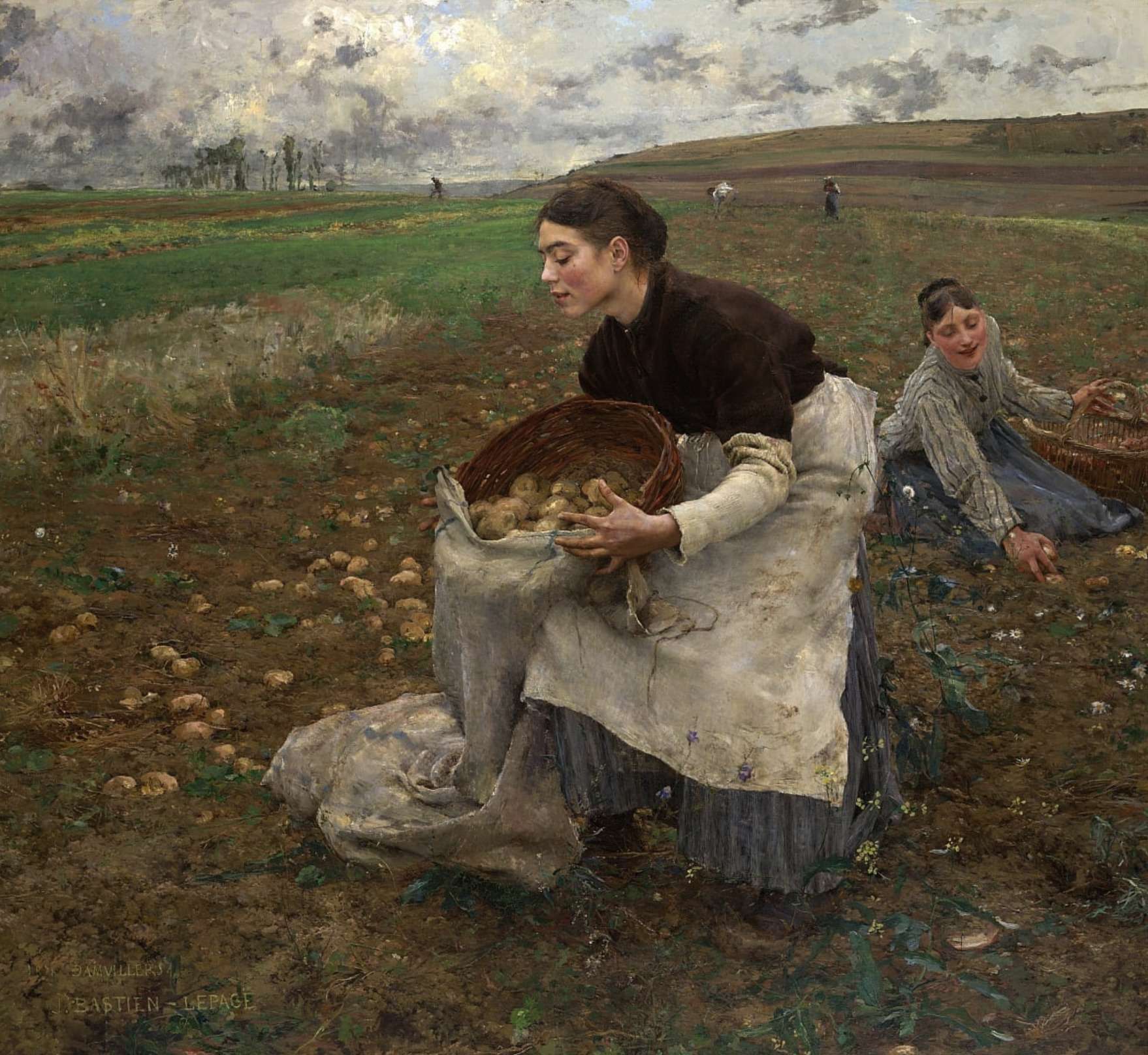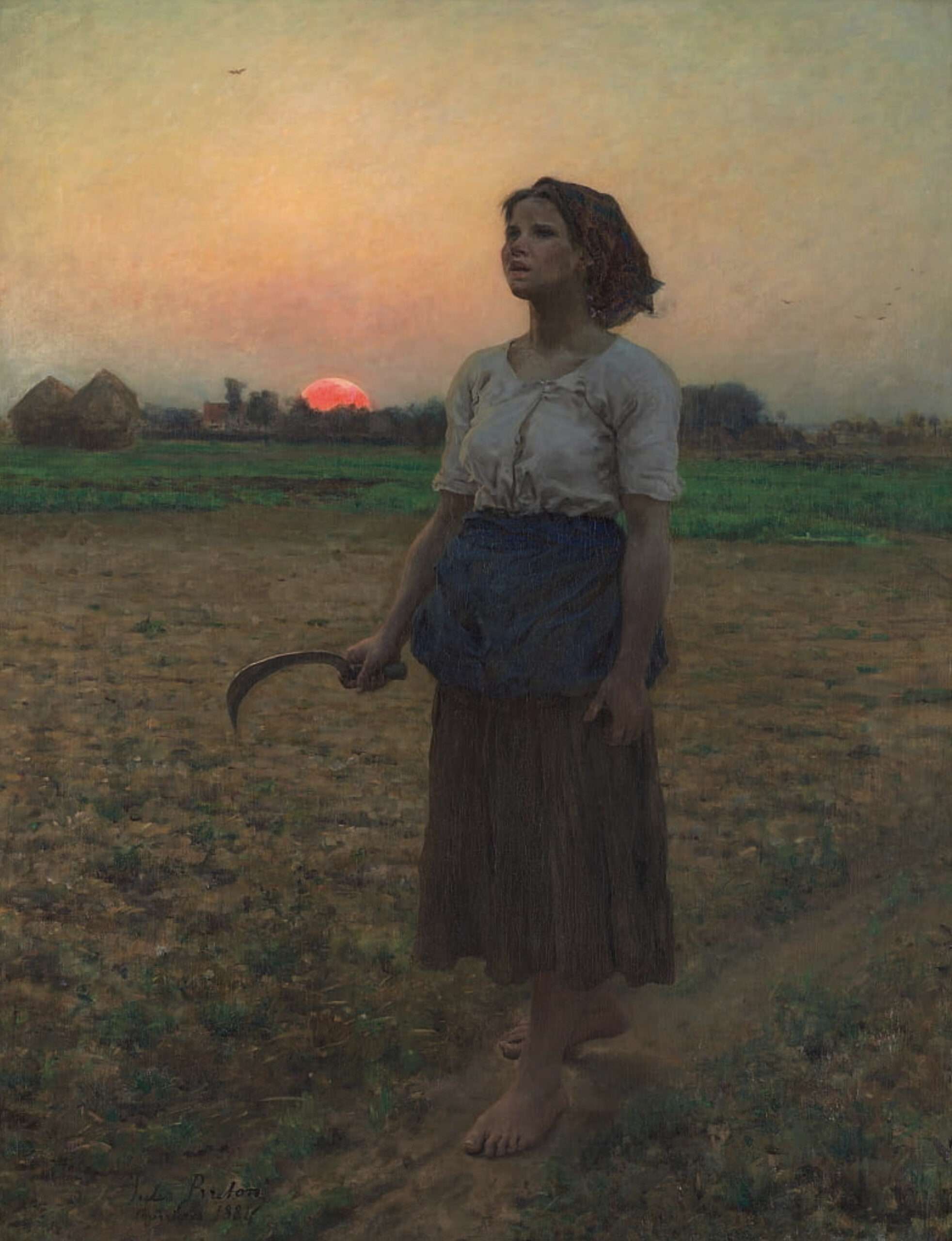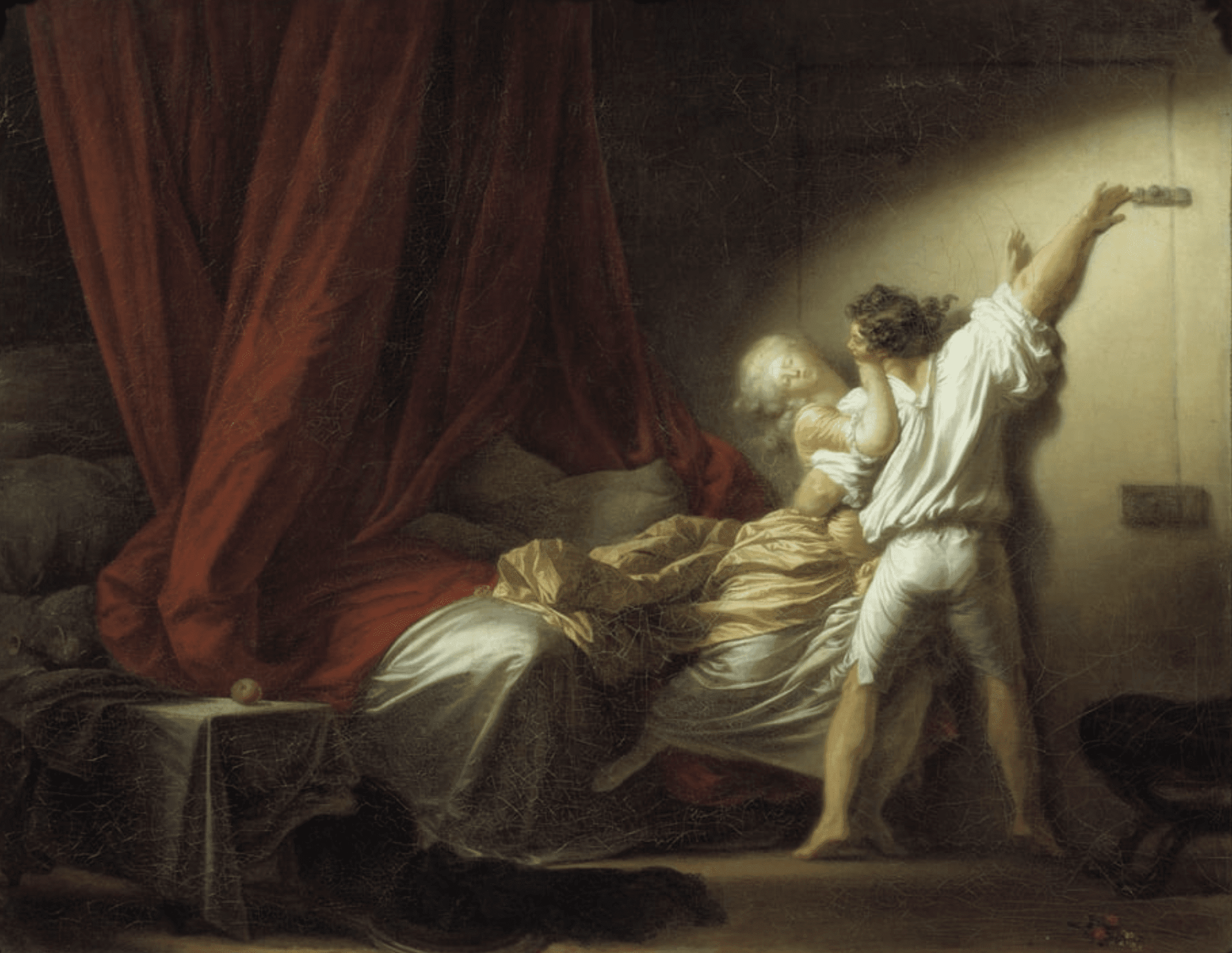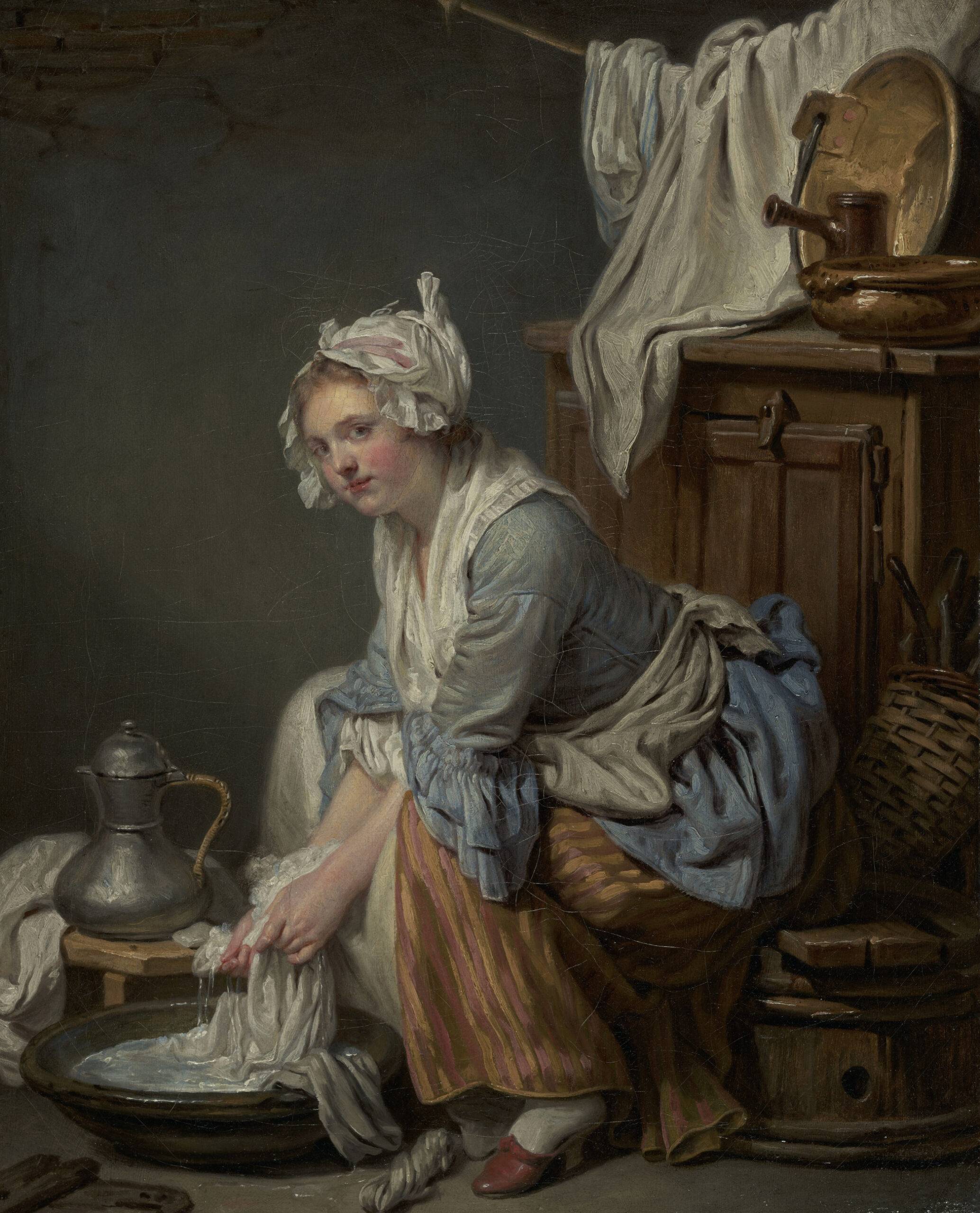SHIRTS WITH BEAUTIFUL ART

The Hardworking Mother Jean-Baptiste-Siméon Chardin 1740
Jean Siméon Chardin, born on November 2, 1699, and passing away on December 6, 1779, was a renowned 18th-century French painter. His artistic expertise primarily lay in the realm of still life, where he earned the title of a master. Additionally, he gained recognition for his genre paintings, which often depicted everyday scenes of kitchen maids, children, and domestic activities. Chardin’s works were characterized by a meticulous balance of composition, a gentle diffusion of light, and a distinctive granular impasto technique.The artist spent the majority of his life in Paris, seldom venturing far from the city. His residence was situated on the Left Bank near Saint-Sulpice until 1757. At that time, King Louis XV bestowed upon him a studio and living quarters within the prestigious Louvre.

October(Oktober) Jules Bastien Lepage 1878
Jules Bastien-Lepage’s artworks unmistakably reveal his peasant origins. Born in 1848, the French artist exhibits a deep familiarity and ease with fieldwork, as evident in his painting “October.” The canvas prominently features an earthy-brown potato field, dominating the composition from bottom to top, mirroring the vastness of nature portrayed. In the foreground, two young women engage in their labor. The center of attention is drawn to the striking farmer’s wife, her face exuding determination as she diligently fills a large sack with freshly harvested potatoes. Behind her, shaded from the sun, another woman can be seen collecting potatoes and placing them into a basket on the ground. This portrayal of life in harmony with “Mother Nature” reflects simplicity, industry, and contentment. Bastien-Lepage’s artistic prowess shines through as he skillfully captures the fluid movements of the figures, accentuating their dynamics by adding smaller distant figures. The scene’s ambiance is further reinforced by the torn sky at the top of the painting, providing a sense of natural authenticity. Overall, “October” embodies the artist’s profound connection to his rural upbringing, bringing forth a captivating and vivid depiction of the beauty found in everyday agricultural life.

The Song of the Lark / Jules Breton (1884)
Jules Adolphe Aimé Louis Breton, born on May 1, 1827, and passing away on July 5, 1906, was a renowned French naturalist painter of the 19th century. His artistic style drew profound inspiration from the captivating landscapes of rural France, and his mastery of traditional painting techniques established him as a key proponent in depicting the beauty and idyllic charm of country life. Breton’s artistic journey extended through the 1870s, 1880s, and 1890s, during which his reputation flourished. His evocative portrayals of solitary peasant women in scenic settings, illuminated by the setting sun, captured the hearts of many, particularly in the United States. Such was the demand for his works that Breton often created copies of his own images. His popularity during his lifetime was unparalleled, as evidenced by the numerous compositions he exhibited at the prestigious Salons, which were widely disseminated as engravings.Not only was Breton celebrated in his native France, but his fame also transcended borders, earning recognition in England and the United States. His legacy endures as one of the most prominent painters of his era. Notably, the Art Institute of Chicago houses a collection that showcases Breton’s remarkable talent. ©Art Institute of Chicago

Over The Wall / Filippo Palizzi (1865)
Filippo Palizzi, an Italian painter, was born in Vasto (Chieti). In 1837, he relocated to Naples and initially enrolled at the Royal Institute of Fine Arts. However, after a few months, he decided to leave and join the private school of painter Giuseppe Bonolis. It was through his brother Giuseppe, who had moved to France in 1844, that Filippo became acquainted with the art of the Barbizon School. He visited Paris during the Universal Exhibition in 1855 and later traveled to the Netherlands. Upon returning to Paris in 1863, Filippo Palizzi focused on capturing nature through live studies, immersing himself in the exploration of light and its effects. He participated in the Universal Exhibition of 1867, where he was awarded a gold medal. Throughout the following decade, he continued his work, honing his technique in painting landscapes en plein air and depicting interior scenes with a mastery of light. Among his popular subjects were genre scenes portraying children with animals. Recognizing the importance of modernizing academic teachings, Filippo Palizzi, together with Domenico Morelli, founded the Naples Società Promotrice di Belle Arti in 1861. Additionally, he played a significant role in establishing the Museo Artistico Industriale in 1878 and subsequently served as its director two years later. Filippo Palizzi received commendatore honors from the Order of the Crown of Italy and the Austrian Order of Franz Joseph. He was also an esteemed honorary Associate of several Academies. Filippo Palizzi passed away in Naples in 1899.

The return of the prodigal child. / Leonello Spada
The painting “The Return of the Prodigal Child” was created by Italian Baroque artist Leonello Spada in the 17th century. The painting depicts a biblical story from the Gospel of Luke in which a wayward son returns home to his father after squandering his inheritance.
In the painting, the prodigal son is shown kneeling before his father, who is embracing him with open arms. The father is dressed in rich robes, while the son is shown wearing tattered clothing, emphasizing his penitent state. In the background, a servant is seen preparing a feast to celebrate the son’s return.
The painting is notable for its dramatic use of light and shadow, which creates a sense of depth and intensity. Spada was known for his skillful use of chiaroscuro, a technique in which light and dark areas are contrasted to create a sense of three-dimensional space.
The return of the prodigal child. / Leonello Spada
The painting “The Return of the Prodigal Child” was created by Italian Baroque artist Leonello Spada in the 17th century. The painting depicts a biblical story from the Gospel of Luke in which a wayward son returns home to his father after squandering his inheritance.
In the painting, the prodigal son is shown kneeling before his father, who is embracing him with open arms. The father is dressed in rich robes, while the son is shown wearing tattered clothing, emphasizing his penitent state. In the background, a servant is seen preparing a feast to celebrate the son’s return.
The painting is notable for its dramatic use of light and shadow, which creates a sense of depth and intensity. Spada was known for his skillful use of chiaroscuro, a technique in which light and dark areas are contrasted to create a sense of three-dimensional space.

Le Verrou : The Lock / Jean Honoré Fragonard
The painting was commissioned by the Marquis de Verri, an aristocrat, to Fragonard. However, the subject of the painting was something that the artist had attempted in his drawings before the Marquis commissioned the work . A scene of love between a young man and a young woman is Fragonard’s speciality, but this work is filled with a passion that could be described as violent.It depicts a young man holding a reluctant young woman in his arms in a bedroom and bolting the door. What is represented is the impulsive sexual desire, resistance and gasping of the struggling lovers. The young man, already undressed, faces the young woman with a passionate expression on his face and his arms around her waist. The woman, still dressed in her luxurious white and gold garments, bends down and tries to reject her partner’s fierce desire, but her resolve is wavering. Soon the young man will have his way .The cover of the bed on the left is turned up. The painter chose the colour blood red for the bed sheets and canopy to represent the sin of carnal desire. Also symbolising human sin is the apple on the table by the bed on the left-hand side of the screen .

seasonal Shirt Art
Jean-Baptiste Greuze / La Blanchisseuse (1761)
The Laundress (French: La Blanchisseuse) is a 1761 genre painting by French artist Jean-Baptiste Greuze (1725-1805), existing in two versions. The subject of laundresses, also known as washerwomen, was a popular one in art, especially in France.
The prime version of The Laundress was one of fourteen works exhibited by Greuze at the Salon of 1761 and was part of the collection of Greuze’s patron, Ange Laurent Lalive de Jully. The painting was mostly unknown for more than two centuries as it was purchased in 1770 by Gustaf Adolf Sparre and privately held in that Swedish art collection and rarely seen until it was acquired by the Getty Museum in 1983.
The second version is now in the Fogg Museum, Harvard. At 39 x 31 cm, it is just slightly smaller than the Getty’s, and also dated c. 1761. It was possibly created to allow a print to be made of the subject.
The second version is now in the Fogg Museum, Harvard. At 39 x 31 cm, it is just slightly smaller than the Getty’s, and also dated c. 1761. It was possibly created to allow a print to be made of the subject.






